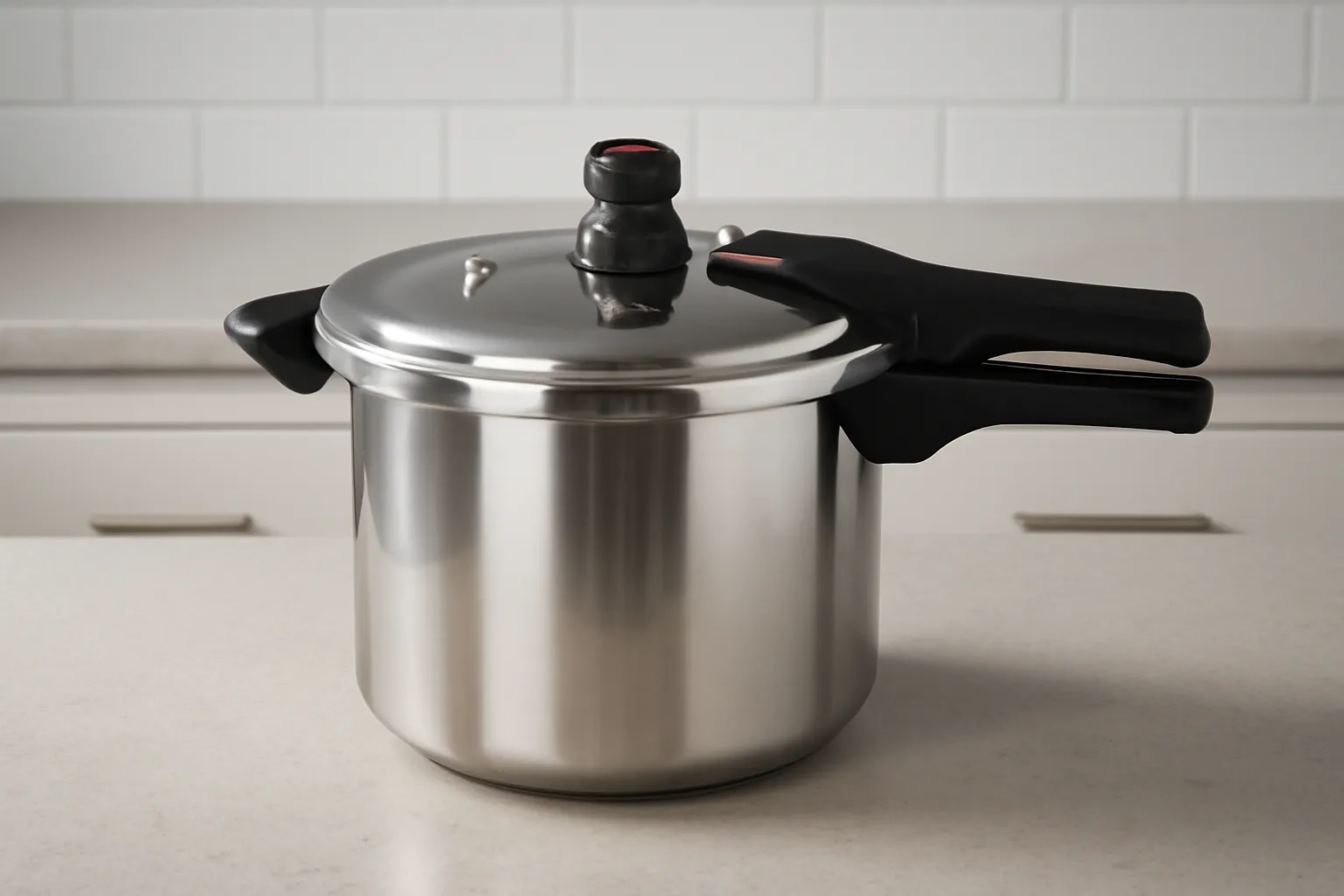Are you interested in the different types of pressure cookers or curious about the specifics of import pressure cookers and container inspections? Learn how to navigate the complexities of these essential kitchen tools.
Pressure cookers have revolutionized the way we prepare food, speeding up cooking times and preserving nutrients in the process. As global trade continues to expand, so does the availability of import pressure cookers. However, navigating through the complexities of the types of pressure cookers, the processes involved in importing them, and ensuring their safety through inspection can be overwhelming for many. In this article, we’ll break down the different types of pressure cookers, what makes import pressure cookers unique, and the importance of inspection for imported pressure containers.
Types of Pressure Cookers
When looking for the right pressure cooker, it’s essential to understand the variety of models available. Here’s a breakdown of the key types:
1. Stovetop Pressure Cookers
Stovetop pressure cookers are the traditional models, designed to sit directly on a burner to generate the heat required for cooking. These cookers often come with a manual control system for regulating pressure and temperature.
Features:
-
Higher pressure levels for faster cooking.
-
More durable and typically made of stainless steel or aluminum.
-
Commonly used for canning, stews, and cooking large meals.
Real-world Example: I’ve used a stovetop model for years to cook hearty meals like beans and stews, appreciating the faster cooking times while maintaining the natural flavors and nutrients of the ingredients.
2. Electric Pressure Cookers
Electric models offer more convenience as they do not require a stovetop. These cookers are equipped with digital controls for setting precise cooking times, temperatures, and pressure levels.
Features:
-
Programmable settings for easy cooking.
-
Automatic pressure release and steam options.
-
Often equipped with additional functions like slow cooking, yogurt making, and sautéing.
Real-world Example: Using an electric pressure cooker like the Instant Pot has become an essential part of my kitchen, making weeknight dinners a breeze. The variety of features simplifies meal prep, especially when I’m busy and need to set it and forget it.
3. Microwave Pressure Cookers
These are compact, microwave-friendly cookers designed for those with limited kitchen space. They cook food under pressure using microwave energy, which can reduce cooking times significantly.
Features:
-
Quick cooking process.
-
Requires less power than traditional stovetop models.
-
Ideal for smaller portions and quick meals.
Real-world Example: I used a microwave pressure cooker for making quick dishes like rice and vegetables. It’s a great space-saver for small kitchens or those in a hurry.
In conclusion, choosing the right pressure cooker depends on your needs and kitchen setup. If you value speed and convenience, electric or microwave pressure cookers may be ideal, while stovetop models offer more control for traditional cooking methods.
👉 Click here to explore more types of pressure cookers 👈
Import Pressure Cookers
The world of import pressure cookers is vast, as these kitchen appliances are manufactured globally. Many countries import pressure cookers to meet local demand, but understanding how these items are imported is crucial for both consumers and distributors.
1. Global Manufacturing
Pressure cookers are manufactured in several countries, with China, India, and Europe being the largest producers. Imported cookers are often priced competitively, offering a wide variety of models and features.
Features:
-
Made using local materials and manufacturing standards.
-
Priced according to import taxes and shipping fees.
-
Variety in design and functionality based on regional preferences.
Real-world Example: When I purchased my imported electric pressure cooker from a European brand, I noticed a significant difference in the quality of construction compared to domestic models. The sleek design and multiple settings made it stand out.
2. Customs and Tariffs
Importing pressure cookers often involves navigating customs regulations. Depending on where the product is manufactured, tariffs and taxes may apply. These costs can affect the price consumers pay for imported models.
Features:
-
Import duties can increase the final price.
-
Compliance with safety and quality standards is required.
-
Documentation like import permits may be necessary.
Real-world Example: When shopping for an imported stovetop pressure cooker, I realized that a high-quality brand from India had a higher upfront cost due to the import tariff. However, the cooker’s durability and performance justified the investment.
3. Warranty and Support
Imported pressure cookers may have different warranty terms depending on the country of origin. It’s essential to verify whether repair or replacement services are available locally.
Features:
-
Some imported models offer limited warranty coverage.
-
Check for service centers or customer support availability.
-
Consider the availability of spare parts for repairs.
Real-world Example: I once bought a pressure cooker from a brand that didn’t offer support in my country, which became problematic when the pressure valve broke. It’s important to consider post-purchase services when importing goods.
👉 Explore more on importing pressure cookers 👈
Import Pressure Container Inspection
When pressure cookers are imported, they must undergo a series of inspections to ensure they meet safety and quality standards. This process is essential for preventing accidents and ensuring the products are functional.
1. Regulatory Standards
Pressure cookers must meet the regulations set by various authorities like the U.S. Consumer Product Safety Commission (CPSC) or European Union standards. These regulations ensure that imported pressure cookers are safe for consumer use.
Features:
-
Compliance with safety standards like pressure tolerance and valve systems.
-
Detailed inspection of construction materials.
-
Testing for proper sealing and functionality.
Real-world Example: I once read about a batch of imported pressure cookers that failed safety inspections due to faulty valves. It was a reminder of why regulations and inspections are so important for consumer safety.
2. Quality Control
Quality control inspections are critical in identifying defects before the product reaches the consumer. These inspections often involve testing for pressure resistance, valve functionality, and even safety features like automatic release systems.
Features:
-
Visual inspections to detect manufacturing defects.
-
Pressure testing to ensure the cooker’s ability to withstand high-pressure levels.
-
Functional tests for all features (e.g., safety release valves).
Real-world Example: When I bought an imported stovetop pressure cooker, it had a rigorous inspection certificate attached. Knowing that it had passed all the necessary safety tests provided me peace of mind in using it.
3. Post-Import Inspection
Once the cooker reaches the local market, additional inspections may be necessary. These checks ensure that the product has not been damaged during transit and remains compliant with local regulations.
Features:
-
Post-import quality assurance checks.
-
Verification that the product meets local specifications.
-
Inspection to prevent the sale of counterfeit or substandard products.
Real-world Example: After importing my pressure cooker from abroad, the store I purchased from performed an additional inspection before selling it. This practice ensured the product was in perfect condition and compliant with local standards.
👉 Learn about pressure container inspections 👈
Conclusion
Choosing the right pressure cooker, navigating the process of importing them, and understanding the importance of container inspections are crucial steps in ensuring you make a safe and informed purchase. Whether you’re cooking at home or a distributor sourcing imported models, knowledge of these areas can help you make decisions that prioritize safety, durability, and convenience. Always remember to check the regulatory standards, warranty conditions, and post-import inspections to ensure the pressure cooker you purchase is both functional and safe.
As the famous saying goes, “A stitch in time saves nine.” In the case of pressure cookers, a little extra attention to detail can save you a lot of trouble in the long run. Happy cooking!






